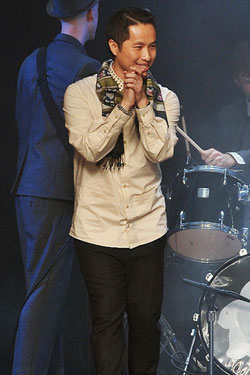
LONDON: For a growing band of Europe's top fashion boutiques like Maria Luisa and Biondini in Paris, Feathers in London and Paleari in Milan, e-commerce is no longer a great logistical nightmare thanks to farfetch.com, a portal and Internet service company in London.
"We wouldn't have been able to do e-tailing on our own," said Robin Schulié, a buyer for Maria Luisa, one of the first shops to join the site when it debuted in October. "It would have meant at least a couple more people to work on it, a very strong organization, and it is an investment that at the moment would have been impossible. José came at the right moment when we needed to change and open ourselves to the Web."
Created by José Neves, 34, a fashion entrepreneur who also founded the b store in London, the site touts "10 cities, 20 fashion boutiques, 200 designers, 1 Web site."
Farfetch.com, which boasts 400,000 visitors a month, divides designers into three categories: Luxe (including the likes of Christopher Kane and Maison Martin Margiela); Lab (Ann-Sofie Back, Peter Jensen); and Cult (April 77, Cheap Monday).
Neves said he planned to limit the number of boutique members, although the list soon will add Milletre in London and Dolci Trame in Siena.
And he now is in talks with the U.S.-based site revolveclothing.com about creating a version of farfetch for about 20 U.S independent retailers.
Farfetch.com takes a percentage of sales from its boutique members, negotiating fees with each one. Neves said the company hasn't been operating long enough to disclose its revenues, but he noted it now has 35 employees.
In addition to the farfetch site, the company also operates members' stand-alone Web sites, including photography and content, and arranges group discounts on shipping costs.
"Our unique advantage is that from payment handling to stock management, we have proprietary software applications and logistics solutions, which cover all areas of e-commerce, leaving the retailer free to concentrate on their own business but still compete in the online arena," Neves said.
"At first we were just a business card, a face and an idea. So people were naturally suspicious," he added. "Eventually we managed to gather the support of a fantastic group of retailers, which made it all happen."
Neves noted that not only are e-sales expensive for a company acting alone, there are certain things that can only be done if there is a certain critical mass - all factors that make such a cooperative type of operation appealing to independent retailers.
"I think it's a great concept that is genuinely different," said Guy Salter, deputy chairman of the nonprofit luxury organization Walpole, in London. Salter said he would describe the farfetch.com concept as that of an "amalgamator."































